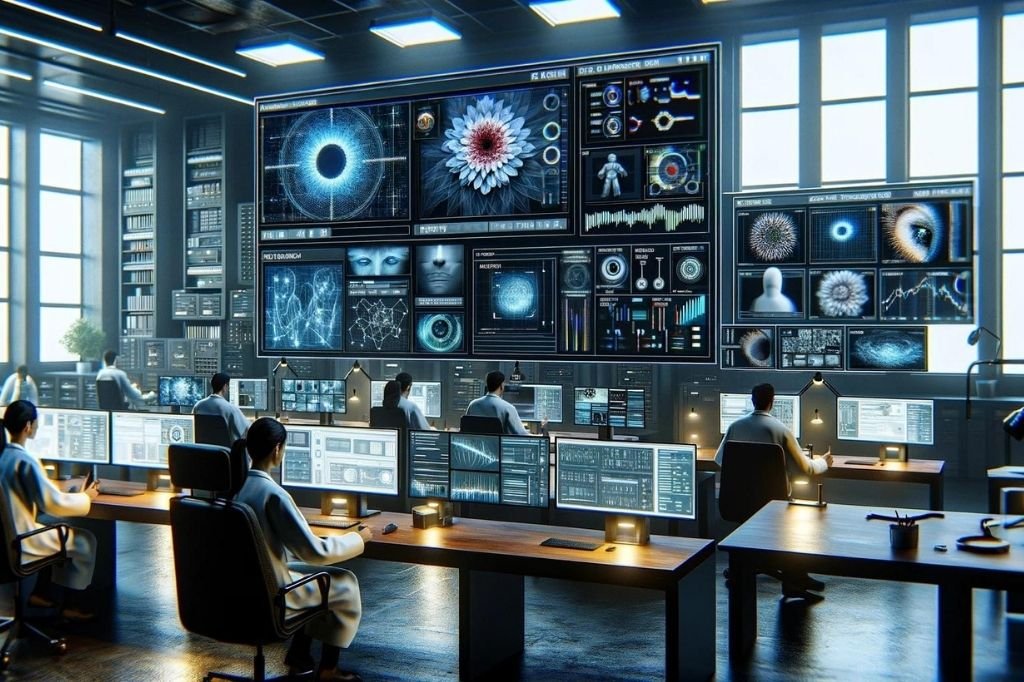In a world teeming with technological advancements, artificial intelligence (AI) has made significant strides in creating visual content that often blurs the line between the artificial and the real. This leads us to a fascinating and crucial inquiry: “Can you tell if an image is AI generated?” With AI becoming increasingly proficient at generating images that rival those taken by cameras or created by human artists, distinguishing them can be both intriguing and imperative, especially in fields like digital forensics, media, and the arts.
Common Characteristics of AI-Generated Images
AI-generated images are typically created through sophisticated models known as Generative Adversarial Networks (GANs) or similar technologies. While these images can be impressively realistic, they often contain subtle clues that can hint at their artificial origins.
One of the most telling signs is the presence of unusual patterns or distortions in the image. AI often struggles with high levels of detail, particularly in complex or subtle textures such as hair, skin, and backgrounds. You might notice that hair looks overly smooth or unnaturally straight, or that skin appears too flawless, lacking pores, freckles, or typical imperfections seen in photographic images.
Another common issue is an inconsistency in lighting and shadows. AI-generated images may show lighting that doesn’t quite match the direction or natural source it should be coming from, or shadows that seem off in terms of angle or opacity. This is because, while AI can learn from a dataset, replicating the physics of light involves a level of randomness and complexity that is difficult to capture.
Furthermore, elements in an AI-generated image might lack symmetry or show unrealistic proportions. For instance, you might notice distorted facial features, irregularly shaped eyes, or ears that do not mirror each other perfectly. Such anomalies are often subtle but can usually be spotted upon closer inspection.
Technological Tools to Detect AI Artifacts
As AI technology evolves, so too do the tools designed to detect its outputs. Various software and applications have been developed specifically to identify whether an image is generated by AI. These tools often analyze the image’s metadata or use deep learning algorithms to detect patterns and inconsistencies typical of AI-generated content.
One such tool is based on the concept of noise analysis. Digital images naturally contain a certain level of noise, which varies depending on the device used to capture or create the image. AI-generated images, however, tend to exhibit a different kind of noise—or sometimes a lack thereof—because they are rendered from pixel-level manipulation rather than captured through a lens.
Another approach involves reverse image searching, where the tool checks if similar images exist online. Since many AI tools learn from vast online image datasets, the generated images can sometimes be very close to images that already exist on the internet, albeit with some modifications.
Developers have also created more advanced AI systems designed to recognize the signatures of other AI applications. These AI detectors are trained using thousands of examples of both real and AI-generated images, allowing them to learn and predict the origin of new images with a significant degree of accuracy.
Implications and Ethical Considerations
The ability to detect AI-generated images isn’t just a technical challenge; it also has profound ethical and societal implications. In the realm of media, for instance, distinguishing between real and AI-generated images can be crucial in maintaining journalistic integrity and truth in reporting. Similarly, in art, the distinction affects copyright and originality, fundamental aspects that define the creative industry.
Moreover, as AI becomes more accessible, there’s a growing potential for its misuse in creating deceptive imagery—be it in political propaganda, fake news, or malicious hoaxes. Thus, developing effective detection tools and ethical guidelines is essential to keep pace with AI’s capabilities and ensure its use benefits society without infringing on truth and transparency.
Future Trends in AI Image Generation and Detection
Looking forward, both the technology for creating AI-generated images and the methods for detecting them are expected to become more sophisticated. As AI models receive more data and improved algorithms, the images they produce will likely become increasingly difficult to differentiate from real ones. Conversely, detection technologies will also advance, leveraging newer, more powerful AI systems to keep up with these advancements.
In this ongoing “arms race” between AI generation and detection, we must stay informed and vigilant. The development of standardized benchmarks for AI-generated content and stronger regulatory frameworks will be key in managing the impact of these technologies.
In conclusion, while it is possible to tell if an image is AI generated using current techniques, the task is becoming more complex with advances in technology. As we continue to navigate this evolving landscape, awareness and understanding of AI capabilities and limitations remain crucial. We must foster a culture of responsibility and ethics in AI development to harness its potential while safeguarding our reality against manipulation.
